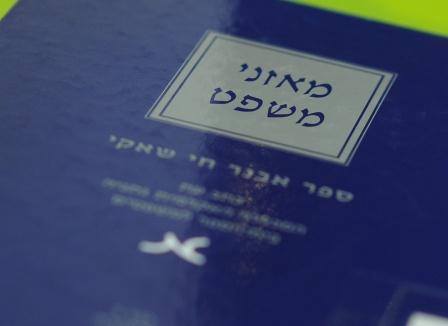A. Ph.D. Dissertation
A Social-Behavioral Model for Understanding Youth Violence in Israel (284p in Hebrew). June 2000. Bar-Ilan University. Supervised by Dr. Yossi Harel.
B. Articles in Refereed Journals
Published
1. Laufer, A. (2003) Psychological Growth in the Aftermath of Terrorist Acts.
Palestinian Israeli Journal. 10(4). 30-36.
2. Laufer, A., & Harel, Y. (2003). The Role of Family, Peers and School Perception
in Prediction Involvement in Youth Violence. International Journal of Adolescent Medicine and Health. 15(3): 235-246.
SJR IF: 0.154; Ranking: Q3 Public Health, Environmental & Occupational Health; Cited: 36.
3. Laufer, A., & Harel, Y. (2003). "Correlations Between School Perception and
Pupil Involvement in Bullying, Physical Fights and Weapon Carrying. Megamot, 42(3), 437-459. [Hebrew].
4. Solomon, Z., & Laufer, A. (2004). In the shadow of terror: changes in world
assumptions in Israeli youth. Journal of Aggression, Maltreatment, and Trauma ,9, 353-364.(as well as a chapter in an edited book n.2)
(equal contribution)
SJR IF: 0.443 Ranking: Q3, Psychiatry & Mental Health; Cited: 31.
5. Laufer, A & Solomon, Z. (2006). Posttraumatic Symptoms and Posttraumatic
Growth among Israeli Youth Exposed to Terror Incidents. Journal of Social and Clinical Psychology, 25(4), 429-447.
SJR IF: 0.951; Ranking: Q1 Clinical Psychology. Cited:235
6. Laufer, A., Harel, Y. & Mulcho, M. (2006). Daring, Substance use and
Involvement in Violence among School Children: Exploring a Path Model Journal of School Violence, 5, 71-88.
SJR IF: 0.101; Ranking: Q4, Education. Cited: 10
7. Laufer, A., & Solomon, Z. (2006). Do Israeli Male and Female Adolescents Cope
Differently with Terror Attacks? Society and Welfare, 26(4), 479-501.[Hebrew].
8. Laufer, A., & Solomon, Z. (2006). Responses of Israeli Youth to Terror:
Posttraumatic Symptoms and Indicators of Psychological Growth. Megamot, 44(3), 407-423. [Hebrew].
9. Laufer, A. (2006). Relationships Between Exposure to terror and Ideological
commitment among Adolescents Politically Inclined toward the Right, Center and Left. Judea and Samaria Research, 15, 281-298. [Hebrew].
10*. Laufer, A., & Shechory, M. (2007). Youth Involvement in the Resistance to the
Disengagement Plan: Assessment of Legal and Illegal Activities. Judea and Samaria, 16, 363-376. [Hebrew].
11*. Hamama-Raz, Y., Solomon, Z., Cohen, A., & Laufer, A. (2008). PTSD
symptoms, Forgiveness and Revenge among Israeli-Palestinian and Jewish Adolescents. Journal of Traumatic Stress, 21, 521-529. (Equal contribution).
SJR IF: 1.391; Ranking: Q1 Clinical Psychology. Cited: 46
12*. Levine, S. Z., Laufer, A., Hamama-Raz, Y., Stein. A., & Solomon, Z. (2008).
Posttraumatic Growth in Adolescence: Examining its Components and Relationship with PTSD. Journal of Traumatic Stress, 21, 492-496.
SJR IF: 1.391; Ranking: Q1 Clinical Psychology. Cited: 133
13*. Shechory, M., & Laufer, A. (2008). Levels of distress and belief in
authorities law in light of geopolitical changes among youth living. Judea & Samaria Research Studies, 17, 239-252. [Hebrew]. (Equal contribution).
14*. Shechory, M., & Laufer, A. (2008). Social Control Theory and the
Connection with Ideological Offenders among Israeli Youth During the Gaza Disengagement Period. International Journal of Offender Therapy and Comparative Criminology, 52, 454-473.
SJR IF: 0.668 Ranking: Q2, Applied Psychology; Cited:19
15.* Laufer, A. (2009). Posttraumatic growth: A positive illusion or a new way
to understand how people cope with trauma. Society and Welfare, 29(1), 63-84 [Hebrew]
16*. Laufer, A., Shechory, M., & Solomon, Z. (2009). The association between
right-wing political ideology and youth distress. Child and Adolescent Social Work Journal, 26, 1-13.
SJR IF: 0.318; Ranking: Q2 Social Science (Miscellaneous). Cited: 8.
17*. Laufer, A. & Shechory, M. (2009). Emotional distress and ideological
segregation two years after the disengagement plan among youth who were evacuated or who resisted the evacuation. Society and Welfare, 29(4), 431-453. [Hebrew].
18*. Laufer, A., & Solomon, Z. (2009). Gender differences in PTSD in Israeli youth
exposed to terror attacks. Journal of Interpersonal Violence.24, 959-976.
SJR IF: 1.130; Ranking: Q1 Clinical Psychology. Cited: 58.
19* Laufer, A., Hamama-Raz, Y., Levine, S., & Solomon, Z. (2009). Posttraumatic
growth in adolescence: The role of religiosity, distress and forgiveness. Journal of social and clinical psychology, 28(7), 862-880.
SJR IF: 0.806; Ranking: Q1 Clinical Psychology. Cited:43
20*. Levine, S.Z., Laufer, A., Stein, E., Hamama-Raz, Y., & Solomon, Z. (2009).
Examining the relationship between resilience and posttraumatic growth, Journal of Traumatic Stress, 22, 282-286.
SJR IF: 1.558; Ranking: Q1 Clinical Psychology. Cited:219
21*. Laufer, A., & Shechory, M. (2010). Distress levels among teenagers who
participated in anti-disengagement activities. Megamot, 46, 552-574. [Hebrew]
22*. Harel-Fisch, Y., Radwan, Q., Walsh, S.D., Laufer, A., Amitai, G., Fogel-
Grinvald, H., & Ziad, A. (2010). Psycholosocial outcomes related to subjective threat from armed conflict events (STACE): Findings from the Israeli-Palestinian cross-cultural HBSC study. Child Abuse and Neglect, 34. 623-638.
SJR IF: 1.846; Ranking: Q1 Developmental & Educational Psychology. Cited:43
23*. Laufer, A., Solomon, Z., & Levine, S. Z. (2010) Elaboration on Posttraumatic
Growth in Youth Exposed to Terror: The Role of Religiosity and Political Ideology. Social Psychiatry and Psychiatric Epidemiology, 45(6) 647-653.
SJR IF: 1.306; Ranking: Q1 Social Psychology. Cited: 25.
24*. Laufer, A. & Solomon, Z. (2010) Political Ideology and Psychological
Symptoms following Terror. Youth and Society, 41(3), 414-433.
SJR IF: 0.710; Ranking: Q1 Social Science (Miscellaneous); Cited:8
25*. Shechory, M., & A. Laufer. (2011). Ideological delinquency: Gender
differences among Israeli youth during the withdrawal from the Gaza Strip. International Journal of Offender Therapy and Comparative Criminology, 55(2), 326-343. (Equal contribution).
SJR IF: 0.626 Ranking: Q2, Applied Psychology; Cited:13
26*. Shechory, M., & Laufer, A. (2011). Resistance among evacuated youth:
Involvement in illegal activity and connection to the rule of law and to attitudes toward the State, the Yesha Council and the Rabbis. Israeli Criminology. 1, 7-27. [Hebrew] (Equal contribution).
27*. Laufer, A. & Solomon, Z. (2011). The role of religious orientations in youth's
Posttraumatic symptoms after exposure to terror. Journal of religion and health, 50. 687-699.
SJR IF: 0.315; Ranking: Q1, Religious Studies; Cited: 16.
28*. Fienklestein, M., Laufer, A., & Solomon, Z. (2012). Coping strategies of
Ethiopian immigrants in Israel: Association with PTSD and distress. Scandinavian Journal of Psychology, 53, 490-498. (Equal contribution)
SJR IF: 0.850; Ranking: Q1, Arts & Humanities (Miscellaneous); Cited: 13
29*. Shechory Bitton, M., & Laufer, A. (2015). Evacuation following missile attacks,
distress and behavioral problems among children in southern Israeli communities. Society and Welfare, 35(2), 203-230. (Equal contribution). [Hebrew].
30*. Shechory Bitton, M., & Laufer, A. (2017). PTSD and PTG among Israeli
mothers: Opposite facets of exposure to terrorism. Stress and Health, 33, 676-683. (Equal contribution).
31* Shechory Bitton, M., & Laufer, A. Children's emotional and behavioral
problems in the shadow of terrorism: The Case of Israel. Accepted for publication in Children and Youth Services Review (Equal contribution).
C. Articles or Chapters in Scientific Books
1. Solomon, Z., Laufer, A., & Lavi, T. (2005). Childhood in the shadow of Intifada:
Exposure and posttraumatic reaction of Israeli youth. (Pp 77-110). In E. Somer and A. Bleich (Eds). Early interventions after disasters and terrorism: The Israeli experience. Tel-Aviv: Ramot, Tel-Aviv University. [Hebrew].
2. Solomon, Z. & Laufer, A. (2005). Israeli youth cope with terror: Vulnerability and Resilience. (Pp. 229-246). In M. Ungar (Ed). Handbood for Working with Children and Youth. Pathways to Resilience. California: Sage Publication.
3* Laufer, A. & Shechori, M. (2008). Chpater 11: Alienation and emotional distress
among relocated youth following the Gaza Disengagement. (Pp. 212-23)1. in N. Ronel, K. Jaishankar and M. Bensimon (Ed.), Trends and Issues In Victimology. Cambridge, UK: Cambridge Scholars Publishing.
4.*. Laufer A., & Solomon, Z. (2010). Chapter 2. Posttraumatic Growth in Israeli
Jews. (Pp.15-31). In T. Weiss and R. Berger (Eds.), Posttraumatic Growth and Culturally Competent Practice. NJ: John Wiley & Sons.
5*. Laufer. A. & Shechory-Bitton, M (2013). Forced displacement and its
implications on youth's distress and posttraumatic growth. In K. Jaishankar & N. Ronel (Eds.). Global Criminology (pp.253-268). London New York: CRS Press (Tylor & Frasoncis Group).
D. Articles in Conference Proceeding
Laufer, A. (2005). Changes in the self and World Assumptions among youth exposed
to terror incidents. A Handbook for working with children and youth: Pathways to resilence across cultures and contexts. Nova Scotia: Dlhousie University, Halifax.
E. Other Scientific Publications
1.* Shechory, M., & Laufer, A. (2008). Participation of Jewish Youth in Samaria
and Judea in Illegal Activities against the Dismantling of Settlements. Mifne, Forum for Social Issues, 43-47. [Hebrew] (Equal contribution).
2.* Shechory, M., & Laufer, A. (2011). The effects of security-related stress on
children and mothers – an examination of the distress levels with reference to temporary respite, and the involvement of governmental and non-governmental institutions. National Insurance Institute of Israel. [Hebrew]. (Equal contribution).










